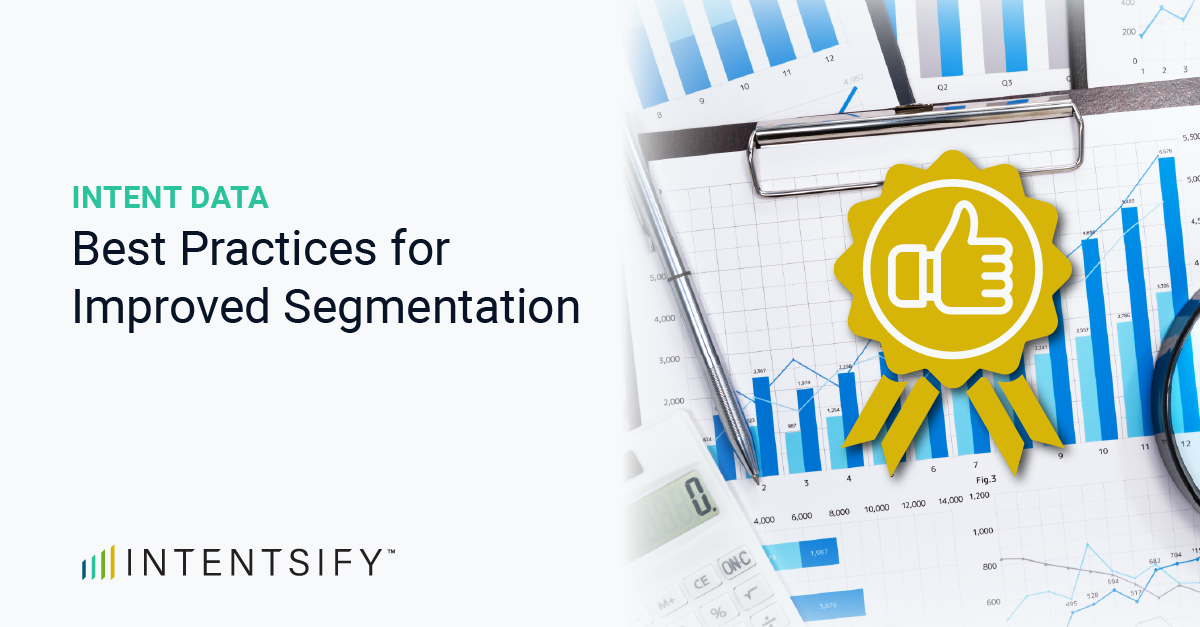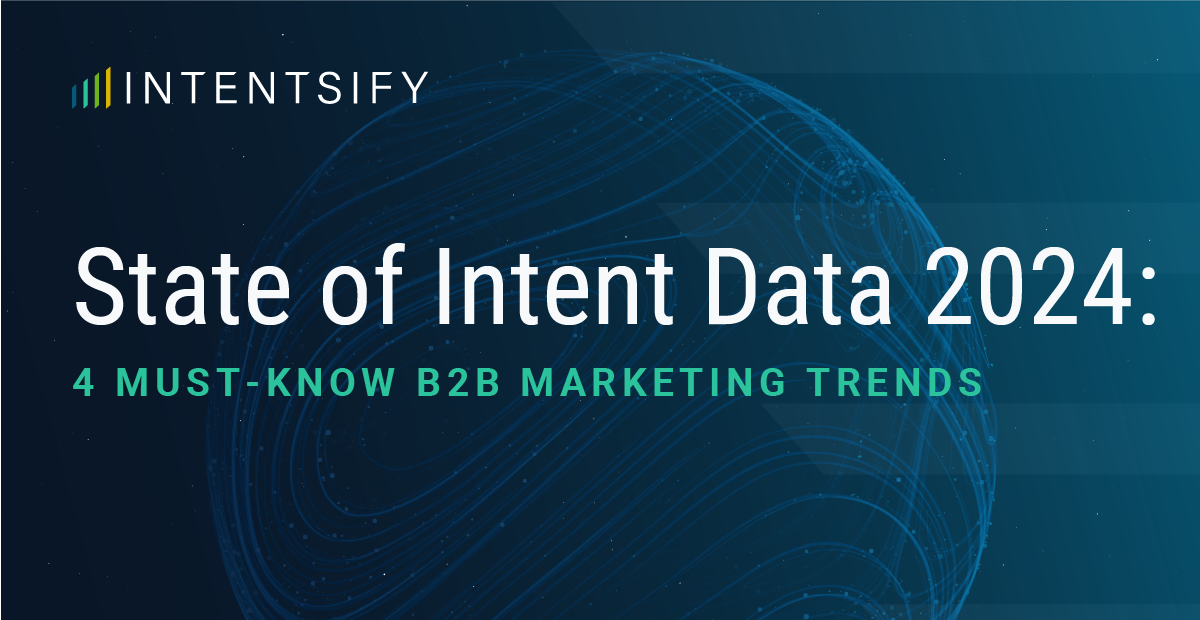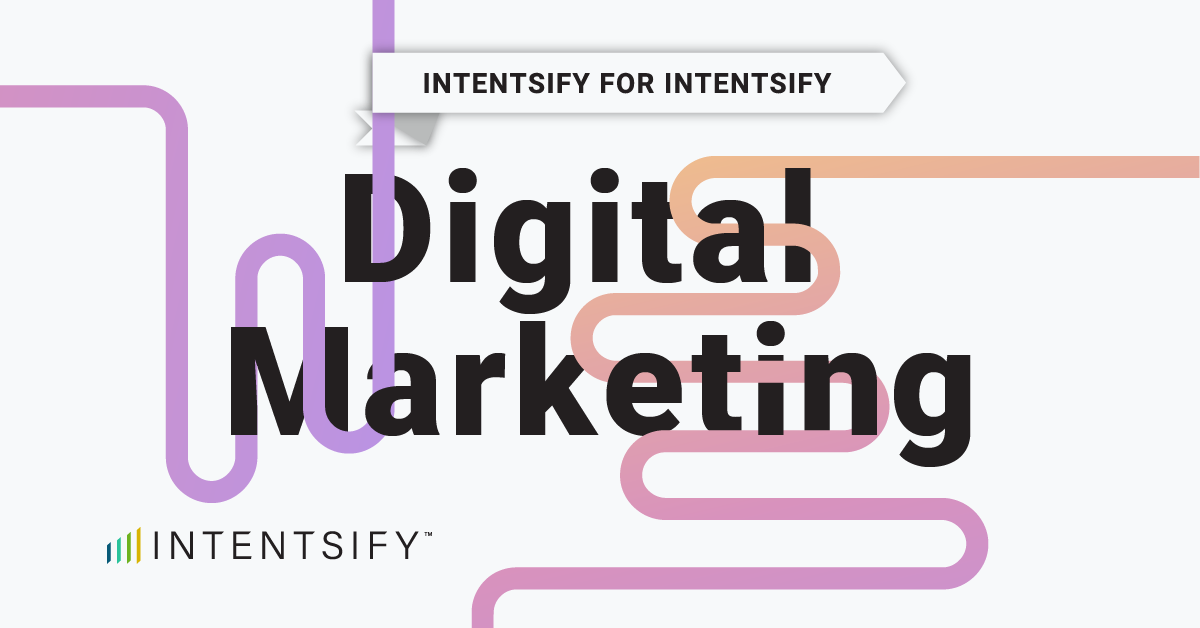In today’s B2B landscape, intent data is one of the most talked about topics amongst marketing professionals. But knowing how to make that data actionable, is where sales and marketing experts are left spinning their wheels.
Intentsify’s intent-activated content syndication programs enable customers to gain contact-level information from individuals at accounts displaying high purchase intent and have opted to provide their data. The resulting lead data is compliant with all applicable data privacy regulations and provides marketing teams the benefit of both account and contact-level intent data.
Intent data’s most important value is its ability to enhance nearly all B2B marketing efforts—from top-of-funnel awareness marketing efforts to post-sell customer retention initiatives. If you’re thinking about investing in intent data to support your ABM strategy, make sure you consider its value to the entire buyer cycle.
“Identifying which target accounts are in an active buy-cycle was an important piece, but we still required an effective way to get decision-makers at those accounts to engage with our brand. Intentsify’s intent-activated lead gen solution is the best and easiest way to both get your branded content in front of targeted personas at intent-identified accounts and convert them into quality top-of-funnel leads.” – John Phillips, Head of Demand Generation at Nerdery
5 Best Practices to Follow When Implementing Intent Data
1. Combine Intent Data with Existing Data
Intent data alone is powerful, but its potential explodes when combined with your existing customer data. Merge intent signals with demographics, purchase history, website behavior, and other data points to build richer, more nuanced audience segments.
Pro Tip: Get the most out of your intent data by combining content syndication and display efforts to gain a more holistic view of your campaigns. Using cross-channel intent-activation will not only help boost your reach, but also help you go after a more targeted audience.
2. Focus on Intent Strength and Timing
Not all intent signals are created equal. Identify high-intent buyers based on the strength and recency of their intent data. Consider factors like multiple website visits, specific page views, and engagement with content related to your product or service.
3. Map Intent to Buying Stages
Different intent signals often correspond to different stages in the buying journey. Research and comparison indicate early-stage interest, while downloading white papers or requesting demos suggest a higher purchase intent. Mapping intent to specific stages allows you to deliver relevant content and nurture leads effectively.
4. Personalize Your Approach
Use intent data to personalize your messaging and communication across channels. Tailor email campaigns, website content, and landing pages to address the specific needs and interests of each segment.
5. Continuously Evaluate and Refine
Your segmentation strategy should be a living document. Monitor campaign performance, analyze data, and adjust your segments and targeting criteria as needed. Regularly revisit your intent data sources and ensure they align with your evolving audience and marketing goals.
Pro Tip: Don’t get overwhelmed by data! Start with a few segments based on high-impact intent signals and gradually refine your approach as you gain experience and confidence.
Think of intent data like compound interest. Using intent data to increase conversion rates by just a few percentage points at each stage of the funnel (and beyond) will result in a higher return-on-investment for the business — all for the same investment in time and resources.
By following these best practices, you can leverage the power of intent data to create highly targeted and effective marketing campaigns that reach the right audience with the right message at the right time. Remember, successful segmentation is about understanding your audience and delivering tailored experiences that resonate with their needs and interests.






